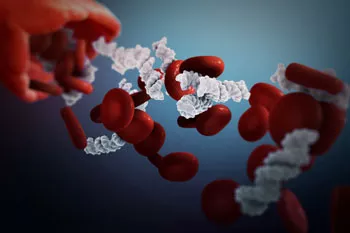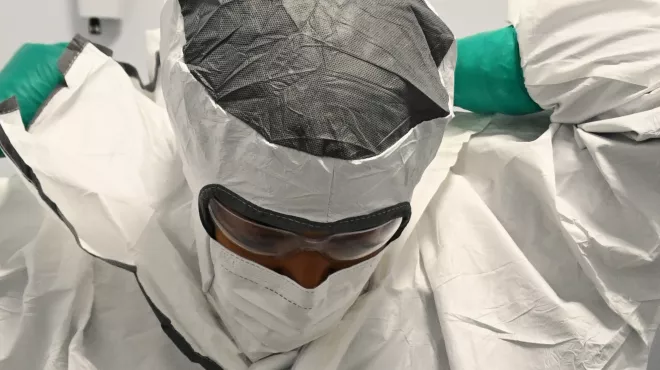Rebecca Leary was completing post-doctoral research at Johns Hopkins University when she started looking for a job in 2013. She had been part of a team that found a possible way to genetically profile cancer with a simple blood draw. As her next step, she wanted to extract as much information as possible from that blood to help match patients to the best possible therapies.
So she typed her interests into Google: Next generation sequencing and diagnostics and cancer. Up popped an announcement. Novartis was forming a new group committed to developing diagnostics for cancer using leading-edge technologies.
“It was serendipity,” she says.
But it wasn’t serendipity. Novartis was looking for new scientists who had recognized, as Leary had, that genomic sequencing technologies had become mature enough to deliver personalized genetic tumor profiles and that such technologies were valuable because targeted drugs were now available for many genetic causes of cancer. What the field needed was new tools for diagnosing patients. “Diagnostics brings those two together,” says Wendy Winckler, executive director of Next Generation Diagnostics (NGDx) at the Novartis Institutes for BioMedical Research (NIBR).
There’s a free exchange of ideas here at NIBR. It’s enormously collaborative and a lot of fun.
Rebecca Leary, Senior Investigator, Novartis Institutes for BioMedical Research
Cancer diagnostics are currently done using tissue samples cut from the patient’s diseased organ. Doctors typically perform these surgical biopsies only once to get a diagnosis, so they have no way of knowing how the tumor changes over time. In contrast, a cancer blood test, called a “liquid biopsy,” can be performed routinely. It has the potential to change the way cancer is managed in the clinic by giving doctors more information, and more up to date information, to tailor treatment.
Now, just three years since Leary joined Novartis as a research investigator working on the NGDx team, the diagnostics she envisioned are becoming reality. Liquid biopsies are being used by Novartis and other organizations in oncology clinical trials. They have already revealed new ways that the information gleaned from blood samples can be used to make better decisions about how to treat patients.
“We’re finding new genetic markers that are really exciting prospects for the implementation of precision medicine in oncology,” says Winckler.
Making a Leap

As a graduate student, Leary was part of a team looking for the next big cancer target. Instead, she says, “Many of the recurrent alterations we identified were already known.”
They did, however, notice a commonality. Every tumor genome they looked at contained multiple DNA changes that were absent in healthy cells from the same individual. At the same time Leary and her graduate school colleagues were searching for cancer targets, scientists were searching for fragments of DNA floating in the blood stream. The fragments are released from dead cells, but it was challenging to tell if they had come from a cell that had been in healthy tissue or a tumor. Leary and colleagues found that tumor-specific DNA changes could be used as a marker to differentiate the two and reported it November 2012 in the journal Science Translational Medicine.
This work helped put the idea of a true liquid biopsy— one that did not require prior knowledge about the patient’s tumor — on the map. Instead of going through surgery to remove a sample of tumor tissue for analysis, perhaps patients could provide blood samples that might contain the same information.
Early testing of the concept suggested that the idea showed promise. Researchers, including Leary, were able to detect circulating tumor DNA in the blood of patients with many different types of solid tumors, though brain tumors were an outlier. Circulating tumor DNA appears to be more scant in patients with brain cancer, potentially because the DNA has trouble crossing the blood-brain barrier.
Bounding Ahead
When Leary arrived at Novartis in 2013, the biotechnology industry was embracing liquid biopsies. Most early products, however, were focused on “hot spot” tests designed to detect small numbers of well-known cancer-related gene mutations in a blood sample. Such tests make it possible for doctors to match patients to a targeted therapy.
Leary, however, thought the NGDx team should be bold. She suggested the development of a 600-gene panel, a comprehensive test that would extract as much information as possible from patient blood samples. The test would build off her earlier work on using circulating DNA to identify cancer, harnessing advances in sequencing technology to look across all classes of DNA changes underlying tumors.
“Rebecca was an early proponent of leapfrogging the existing technologies to see if we could jump to where this space was going to eventually be,” says Winckler.
Leary and colleagues at NGDx developed the test and found clinical collaborators across Novartis who were eager to analyze blood samples using the 600-gene panel as part of their clinical trials.
“There’s a free exchange of ideas here at NIBR,” says Leary. “It’s enormously collaborative and a lot of fun.”
Sticking the Landing
Novartis clinical researchers have also taken an interest in the potential of circulating DNA. When testing a new drug combination in breast cancer patients the clinical researchers genetically profiled patient tumors using both liquid biopsies and traditional biopsies. The traditional biopsies had been taken at the time of diagnosis which, in many cases, was years prior to this clinical study. In the patients who did well on the therapy, the researchers looked at the biopsies for possible reasons why. While the traditional tumor biopsies did not reveal clear patterns, analyses of the recently taken liquid biopsies showed a clear signal. Patients with a specific tumor profile did better on the combination.
“The tumors had grown and changed quite a bit over time,” says Winckler. “The circulating tumor DNA reflected that.”
In a collaboration between NGDx and Novartis clinical researchers focused on head and neck cancer, the 600-gene panel extracted clinically valuable information from blood samples beyond finding specific gene mutations. The panel identified a cancer-associated viral infection and also provided a broad view of how many distinct mutations were present in each individual’s cancer. These two pieces of information plus information about a specific mutation pointed doctors to patients who were likely to do better on the experimental therapy.
Leary’s idea to leap ahead and build a very large gene panel had paid off. A smaller panel would not have provided an accurate picture of the number of mutations in a tumor. Liquid biopsies may also improve the understanding of tumor heterogeneity. Circulating tumor DNA represents DNA shed from multiple regions of the tumor, not just the piece removed surgically, so it also provides a broader assessment for doctors to understand how the patient may respond to therapy.
Development is still underway to improve and clearly understand the accuracy of the test. As the technology improves, liquid biopsies could become a staple in the clinic. They also have the potential to provide a simple way to screen for early cancer, though more research needs to be done first.
And that is where investigators with new ideas like Leary come in. “She brought in innovative science and technological experience,” says Winckler. “We really want to leverage the ideas coming from academia to move diagnostics forward.”



